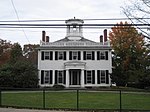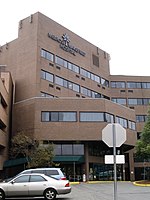Downtown Melrose

Downtown Melrose is the central business district of Melrose, Massachusetts. It is known for its nineteenth century Victorian architecture and its many small family-owned stores. Downtown Melrose is generally classified as the area on Main Street from Grove Street to Essex/Upham Streets. Part of the area, running on Main Street just northeast of the junction with Upham and Essex Streets, is included in the Melrose Town Center Historic District, which was added to the National Register of Historic Places on April 1, 1982. This district encompasses seven buildings, including city hall, the main fire station, Memorial Hall, the Coolidge School, and the Baptist and Methodist churches.
Excerpt from the Wikipedia article Downtown Melrose (License: CC BY-SA 3.0, Authors, Images).Downtown Melrose
Main Street,
Geographical coordinates (GPS) Address Nearby Places Show on map
Geographical coordinates (GPS)
| Latitude | Longitude |
|---|---|
| N 42.454722222222 ° | E -71.065555555556 ° |
Address
TD Bank
Main Street 476
02176
Massachusetts, United States
Open on Google Maps










